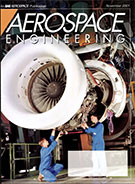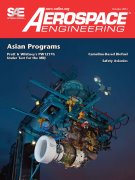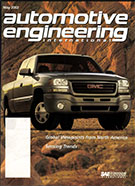Magazine

SAE Off-Highway Engineering 2009-06-01
2009-06-01
The diesel engine diet Researchers correlate engine performance and durability with the properties of alternative fuels that consist of vegetable oils and animal fats. Looking at a safer future Software, other sensors will augment cameras as safety's role in the off-highway industry takes an upward spiral. Plastics expand their range From high-speed train exterior panels to powertrain components, plastics and composite materials are finding their way into more off-highway applications.



















